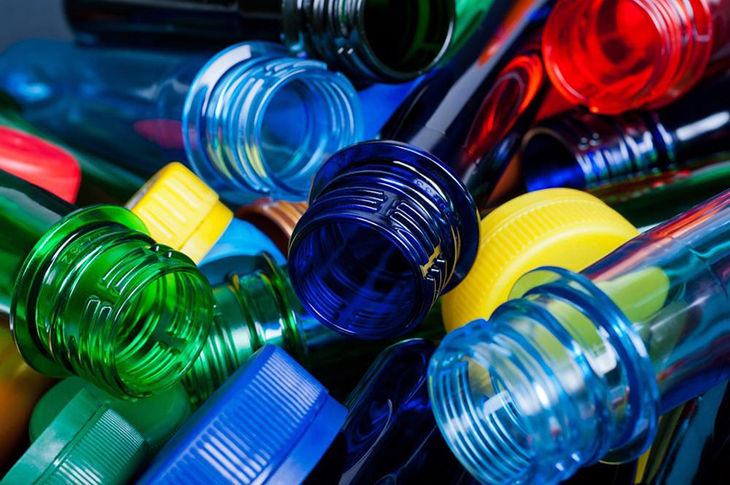
In today’s day and age, it’s all about recycling and upcycling. Materials are being dumped in the trash and dumped in the landfills where they’re left to rot. The truth is, it takes centuries before these are fully disintegrated and decomposed. While it doesn’t seem like much of a big deal, the cumulative issue is bigger than what we believe.
Landfills are filled with so much junk and unfortunately, these are left to simply stay there. Once people get rid of their garbage, they don’t think much of it. They may have responsibly segregated their trash, but have never really asked what happens to them after. In particular, polyethylene materials are disposed of without any consideration.
The good news is that some scientists are actually proactively trying to solve the world’s problems. These notorious plastic bags and containers can be upcycled. Credit can be given to a new technique that they discovered which can be applied to recycling polyethylene bags and food packaging. These can finally be converted into valuable starter materials for precious and useful plastics and chemicals.
So, what exactly are polyethylene plastics? These are essentially used to make common items such as plastic bags, shampoo bottles, and many other products. While this material is common, it is also very hard to recycle them. Fact is, a mere 14 percent of all polyethylene plastic can be recycled. And when they do get recycled, these are limited to a few items such as garden furniture.
Polyethylene plastics account for around one-third of the entire plastics market all over the world and every single one of them are manufactured with the use of fossil fuels, and in large amounts. While this may seem dire, the reality of which can change soon because of the hard work of the scientists from the University of California, Berkeley in the Lawrence Berkeley National Laboratory.
These experts have discovered a way to break down the otherwise strong polymers and turn these into the three-carbon molecule called propylene. This is a crucial molecule that can then be utilized to make new items such as plastics, even polypropylene. These can be turned into ropes, twine, tape, carpets, upholstery, clothing, and even camping equipment. The best part is that this discovery will enable them to process the materials using very minimal fossil fuels.
“You can’t take a plastic bag and then make another plastic bag out of it with the same properties,” said John Hartwig, UC Berkeley Chair in Organic Chemistry. “But if you can take that polymer bag back to its monomers, break it down into small pieces and repolymerize it, then instead of pulling more carbon out of the ground, you use that as your carbon source to make other things — for example, polypropylene.”
Polyethylene is bound by a uniquely unreactive carbon-carbon bonds. These are extremely difficult to break. In the breakthrough experiment that was made, Hartwig and his team had to dissolve samples of HDPE (high-density polyethylene), which is the plastic in container tops, milk jugs, and shampoo bottles. They did so with ethylene gas and a catalyst in a solvent. They did all these by putting the materials in a pressurized vessel.
The researchers had made predictions and they thought that under such conditions, this would force hydrogen from some of the monomer units. With the hydrogen loss that’s set to happen, they assumed that this would set off a series of reactions between the dehydrogenated polymer and ethylene when found in the presence of additional catalysts to produce propylene.
“I was pretty shocked that it worked so well,” Hartwig said in surprise.
To researchers were amazed at the results because even though hydrogen was removed from just 1.9 percent of the monomer units, 87 percent of the carbon atoms in an HDPE polymer chain was able to react with ethylene. These turned into propylene in just 18 hours. In other words, every other monomer in a chain of 1,000 monomer units transformed into propylene gas. This means that there was no polymer left.
The team made a report in the journal Science. They said that this method of upcycling may be able to create valuable items, be able to meet the increasing demand for propylene, give products that have been otherwise considered a waste new uses, and lessen the need of fossil fuels when manufacturing.
Hartwig had talked more about this and said that the latest method is still too small to be deployed for industrial use, their findings, which have been supported by the US Department of Energy, may also have vital implications when it comes to recycling polyethylene plastic and turning them into industrial lubricants and jet fuels.
As for experiments that have yet to be made, he and his team have plans to better their method’s commercial viability using recyclable catalysts. They also have plans of seeing if this work will be able to build the foundation for designing new kinds of chemically recyclable plastic.
What are your thoughts? Please comment below and share this news!
True Activist / Report a typo


